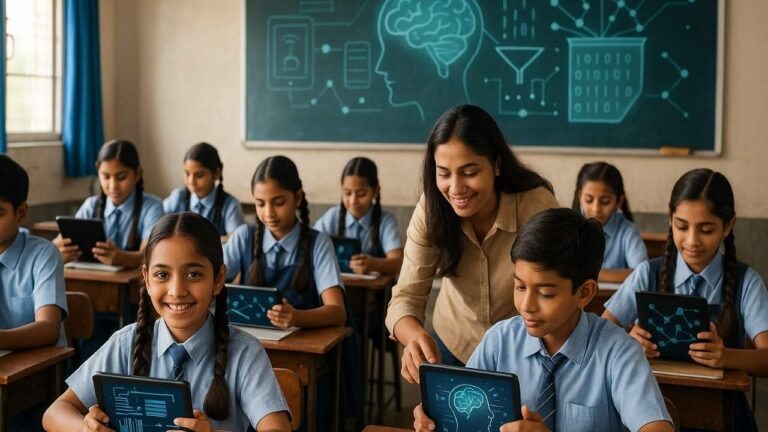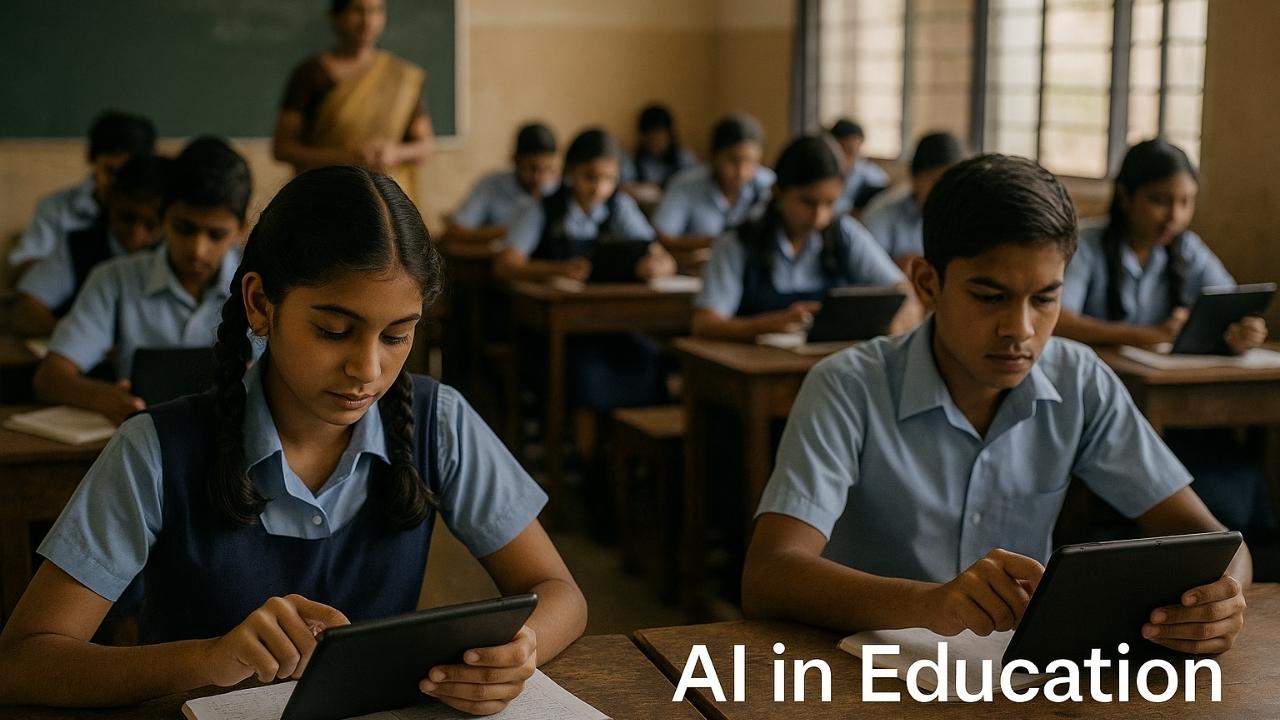India plans to introduce Artificial Intelligence (AI) learning from Class 3 starting 2026-27, aiming to build an AI-ready workforce. This move aligns with NEP 2020 and seeks to make students future-ready in a digital economy.
Objectives of AI in Education
- Develop digital and analytical skills from early schooling.
- Prepare students for AI-driven careers and automation.
- Promote personalised learning and modern teaching techniques.
- Build a tech-ready workforce for India’s growing digital economy.

Teacher Training and Capacity Building
- AI adoption requires skilled teachers, not just technology deployment.
- Govt. has launched pilot programs for teacher training.
- Around 10,000+ teachers trained since 2019 with support from:
- Intel, IBM
- National Institute of Electronics and IT (NIELIT)
- Teachers will use AI tools for:
- Creating lesson plans
- Assessing student needs
- Personalised teaching support
Challenge: Ensuring 1 crore+ teachers gain AI skills in time.
Personalised Learning
- AI tracks student learning speed, errors, and strengths.
- Slow learners receive extra support; advanced learners get higher-level tasks.
- Helps children with disabilities & different language backgrounds.
Role of AI in Classrooms
AI assists but does not replace teachers:
- Automates routine tasks (attendance, assessments, grading).
- Provides real-time feedback and study support.
- Allows teachers to focus more on creative and social learning.
Job Market Impact
- NITI Aayog estimates: 2 million tech jobs may be displaced by AI, 4 million new AI-related jobs likely by 2030
- Need to train youth for new-age jobs and adaptive skills.
Access & Digital Divide
- Unequal access to devices & internet could widen learning gap.
- Requires investment in digital infrastructure & rural schools.
Use of Generative AI in Education
- Many Indian colleges use Gen-AI for:
- 24×7 doubt-solving chatbots
- Custom learning content and quizzes
- Smart tutoring and feedback systems
Inclusivity Benefits
- AI tools help: Students with disabilities, Children from multiple language backgrounds
- Can reduce regional education gaps if implemented inclusively.
Challenges
- Large-scale teacher training
- Technology access for rural and poor students
- Ethical AI use and data privacy
- Avoiding over-dependence on technology
Conclusion:
India’s move to embed AI in early education marks a major educational transition. Success will depend on teacher readiness, digital access for all, and balanced integration of technology with human values. If implemented well, AI can transform learning and prepare students for the future world—but must be inclusive and responsibly managed.
This topic is available in detail on our main website.





